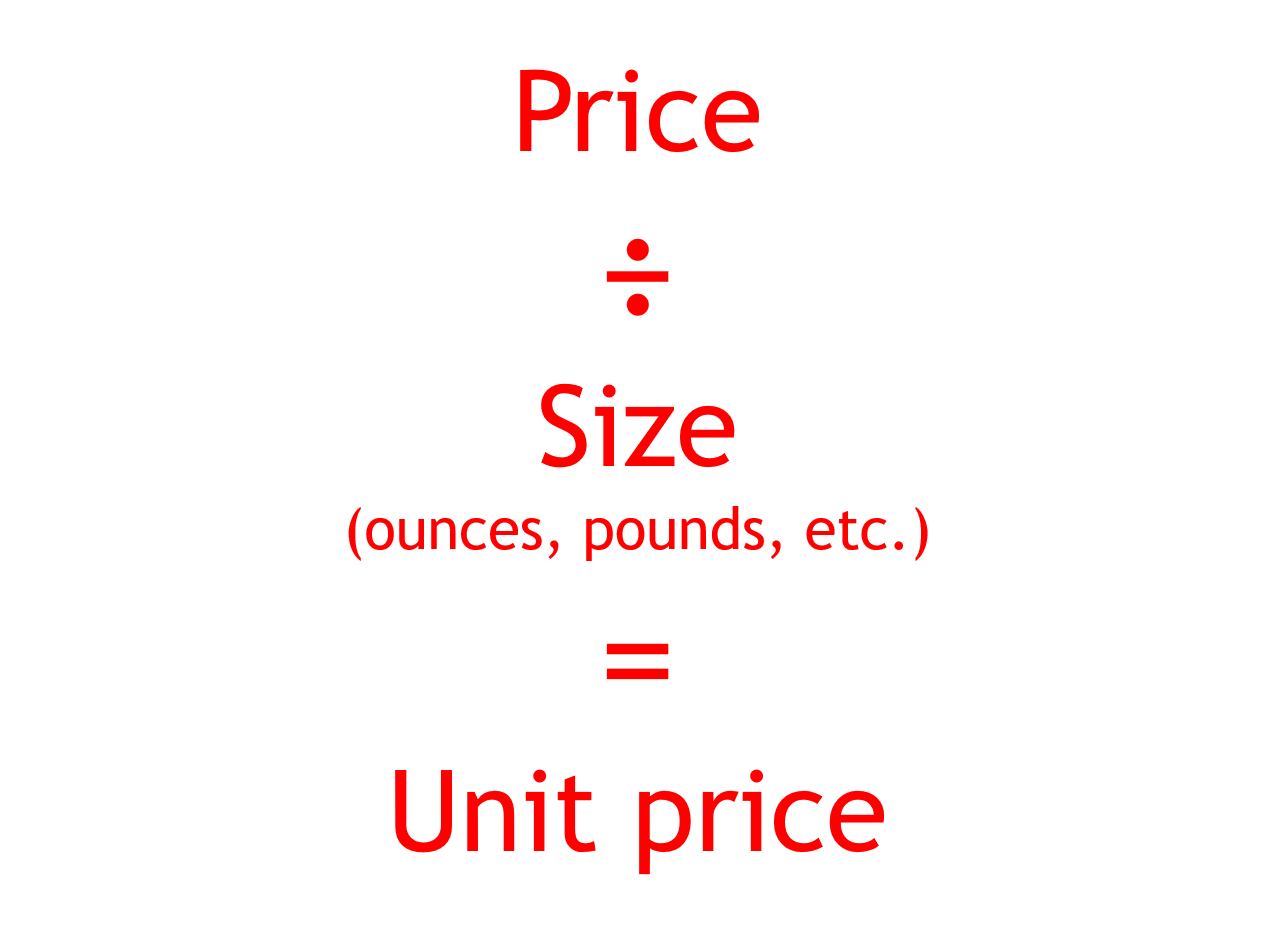How to Use Unit Pricing
Unit pricing is a great way to see if you're really getting the best buy - you can compare different sizes and make the best decision for YOU.
How to Use Unit Pricing
by Katie Cullum
Do you use unit pricing? You may have noticed the tag on the grocery store shelf that looks like this:

This price tag is for chicken leg quarters - 10 pounds for $7.14 (in yellow). The
unit price is shown in orange - 71.4 cents/per pound.
Some stores do not put the unit price on the tag, so how do you know what it is? It's not hard! You can even find apps that will figure the unit price and compare. But you probably have a calculator on your phone, so you can figure it out pretty well yourself.

Price divided by size (ounces, pounds, etc.) = unit price
Now that you know how to calculate unit price, you can compare different prices,
sizes, and stores. Recently, Nancy, Amy, and I (your White County 4-H/FCS team) have
gone to a few stores (Sam's, Wal-Mart, and Cash Saver) to check prices. One item
that we compared was long grain white rice. Here's a quick video (just 1 minute)
about what we found out on rice.
SO, which rice should YOU buy? Do you want a 50-pound bag because it's the best price
per pound (34 cents/pound)? Would you eat all of it?! What about storage for it?
It could be that you don't eat much rice, so paying 72 cents/pound for just 1 pound
would be best for you. If you do eat rice frequently, you may find that paying 51
cents/pound for 4-5 pounds may work out for you.
The unit price can give you a quick comparison on price, but it can't tell you which
one is best for your family. You get to decide that. Most of the time, the larger
the package - the cheaper it is by unit (pound or ounces, etc.). But that's not always
the case. You'd be surprised at what things actually aren't cheaper! If you want to practice figuring unit prices, and learn a little more, check
out this Eating Right When Money's Tight newsletter.
Next time you go grocery shopping, check the unit prices of a few things to compare!
Let me know what you found on my Facebook page!